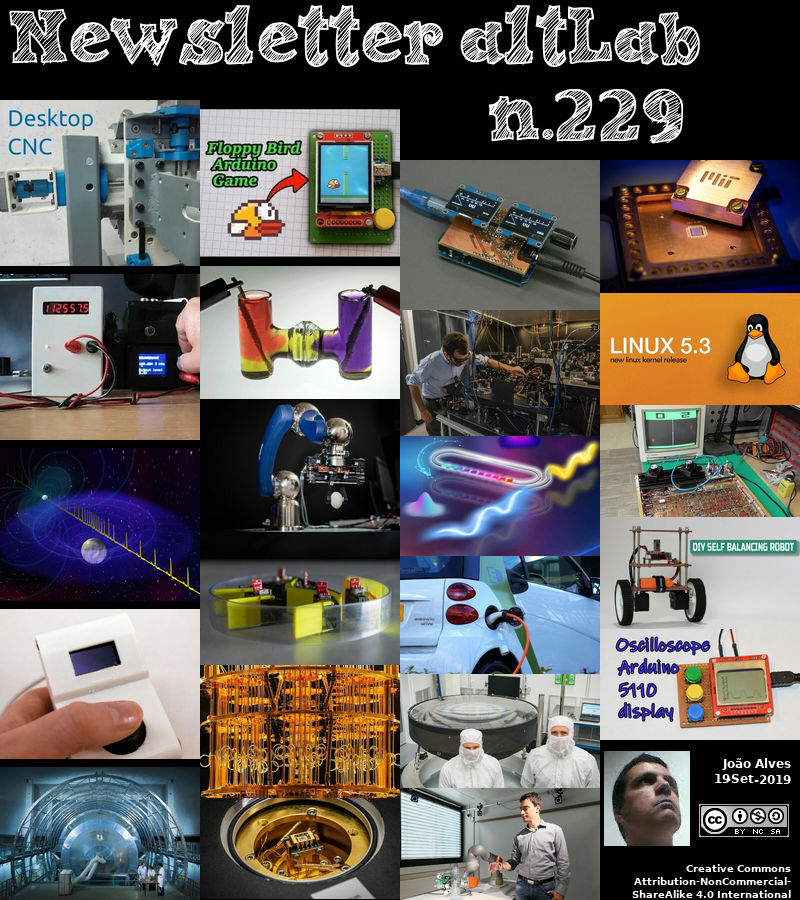2019-09-19 - Nº 229
Editorial
Esta é a Newsletter Nº 229 que se apresenta com o mesmo formato que as anteriores. Se gostar da Newsletter partilhe-a!
Todas as Newsletters encontram-se indexadas no link.
Esta Newsletter tem os seguintes tópicos:
Faz hoje anos que nascia, em 1888, [James Waddell Alexander II](https://en.wikipedia.org/wiki/James_Waddell_Alexander_II. Este matemático norte-americano fundou o ramo da matemática originalmente conhecido como análise situs, agora chamado topologia. Em 1912, ingressou na faculdade do departamento de matemática de Princeton. Posteriormente, Alexander generalizou o teorema da curva de Jordan e, em 1928, descobriu o polinómio de Alexander, que é muito usado na teoria dos nós.
Nesta semana que passou, Linus Torvalds fez o signoff da versão 5.3 do Kernel Linux. Esta versão Major traz vários novos recursos, dezenas de melhorias e drivers atualizados.
Após dois meses de trabalho e oito versões RC (Release Candidate), o kernel final do Linux 5.3 já está disponível, trazendo algumas adições interessantes para melhorar o suporte ao hardware, mas também o desempenho geral. Os destaques desta nova versão de kernel incluem suporte para o Intel Speed Select para facilitar o ajuste de energia em determinados servidores Xeon, suporte para placas gráficas AMD Radeon Navi, como a AMD Radeon RX5700, no driver AMDGPU, suporte para processadores Zhaoxin x86, bem como suporte para o mecanismo de fixação de utilização em CPUs com potência assimétrica. Este novo Kernel também apresenta uma nova chamada de sistema pidfd_open (2) que pretende ajudar os gestores de serviço a lidar com problemas de reutilização de PID, suporte para as instruções umwait x86 para um espaço de utilizador mais eficiente em termos de energia, suporte para o hipervisor ACRN incorporado e suporte de 16 milhões de novos endereços IPv4 no intervalo 0.0.0.0/8.
Também esta semana que passou foi lançada uma nova versão do IDE do Arduino. A versão 1.8.10 visa endereçar problemas que existiam com "screen readers", cache inteligente de ficheiros JSON, Serial Plotter com Legendas nos gráficos, histórico de Comandos no Serial Monitor, entre outras.
Por fim, nesta semana que passou foi disponibilizado o programa de certificação do Wi-fi 6. Esta nova versão agora disponível oferece a melhor experiência ao utilizador com dispositivos baseados no IEEE 802.11ax. Esta nove versão entre outras coisas visa endereçar problemas de segurança identificados nas versões anteriores introduzindo o WPA3, visa igualmente endereçar problemas de saturação quando existem muitos dispositivos ligados em locais como aeroportos, conferencias, etc. Infelizmente só daqui a algum tempo, quando os equipamentos suportarem estas novas normas é que vamos ter estas capacidades. A norma 802.11ax requer suporte no hardware e na maior parte dos casos não vai ser possível apenas com uma actualização de firmware suportar esta nova norma.
Na Newsletter desta semana apresentamos diversos projetos de maker. São também apresentadas as revistas newelectronics de 10 de Setembro e a Hackspace Magazine de Setembro.
 João Alves ([email protected])
João Alves ([email protected])
O conteúdo da Newsletter encontra-se sob a licença  Creative Commons Attribution-NonCommercial-ShareAlike 4.0 International License.
Creative Commons Attribution-NonCommercial-ShareAlike 4.0 International License.
Novidades da Semana

Linux Kernel 5.3 Officially Released, Here's What's New
"Linus Torvalds announced today the release of the Linux 5.3 kernel series, a major that brings several new features, dozens of improvements, and updated drivers. Two months in the works and eight RC (Release Candidate) builds later, the final Linux 5.3 kernel is now available, bringing quite some interesting additions to improve hardware support, but also the overall performance. Linux kernel 5.3 had an extra Release Candidate because of Linus Torvalds' travel schedule, but it also brought in a few needed fixes. "Even if the reason for that extra week was my travel schedule rather than any pending issues, we ended up having a few good fixes come in, including some for some bad Btrfs behavior. Yeah, there's some unnecessary noise in there too (like the speling fixes), but we also had several last-minute reverts for things that caused issues," said Linus Torvalds. Here's what's new in Linux kernel 5.3 Highlights of the Linux 5.3 kernel series include support for Intel Speed Select to make power tuning much easier on certain Xeon servers, support for AMD Radeon Navi graphics cards, such as the AMD Radeon RX5700, in the AMDGPU driver, support for Zhaoxin x86 processors, as well as support for the utilization clamping mechanism in power-asymmetric CPUs." [...]

Arduino 1.8.10 has been released with improved accessibility
"Hey Arduiners, Today we are releasing IDE 1.8.10 and you should try it because it’s awesome! With the support of our incredible community, we’ve been improving a lot of (small and not so small) things. Besides taking a look at the complete changelog, we’d like to point out one outstanding contribution that we received during this dev cycle. Our friend Joe Wegner from APH reached out to us with a very clear plan on how to improve the IDE’s accessibility with some very convenient patches. With the help of co-founder Tom Igoe and ITP alumnus and research resident Jim Schmitz, we’ve started targeting some of the most problematic components that used to interact badly with screen readers (popups, links, lists not entirely navigable by keyboard) while also adding a plethora of accessibility descriptions to components that were basically hidden for blind and visually impaired users. To keep things clean, Wegner added a checkbox under Preference panel to enable some particular optimizations for screen readers (like transforming links into buttons so they can be reached using the TAB key)." [...]

Wi-Fi CERTIFIED 6™ delivers new Wi-Fi® era
"The Wi-Fi CERTIFIED 6™ certification program from Wi-Fi Alliance® is now available and delivers the best user experience with devices based on IEEE 802.11ax. The certification program brings new features and capabilities that enable substantially greater overall Wi-Fi® network performance in challenging environments with many connected devices such as stadiums, airports, and industrial parks. With adoption of the latest Wi-Fi generation increasing, product vendors and service providers can trust Wi-Fi CERTIFIED™ will distinguish Wi-Fi 6 products and networks that meet the highest standards for security and interoperability. Wi-Fi CERTIFIED 6 provides significant capacity, performance, and latency improvements to the entire Wi-Fi ecosystem, while ensuring products across vendors to work well together to deliver greater innovation and opportunity. Wi-Fi CERTIFIED 6 supports a more diverse set of devices and applications, from those requiring peak performance in demanding enterprise environments to those requiring low power and low latency in smart homes or industrial IoT scenarios. Wi-Fi CERTIFIED 6 delivers nearly four times the capacity of Wi-Fi 5, and is an evolutionary advancement for Wi-Fi’s ability to deliver high-performance infrastructure and optimized connectivity to all devices on a network simultaneously – bringing noticeable improvements in densely connected Wi-Fi environments." [...]
Outras Notícias
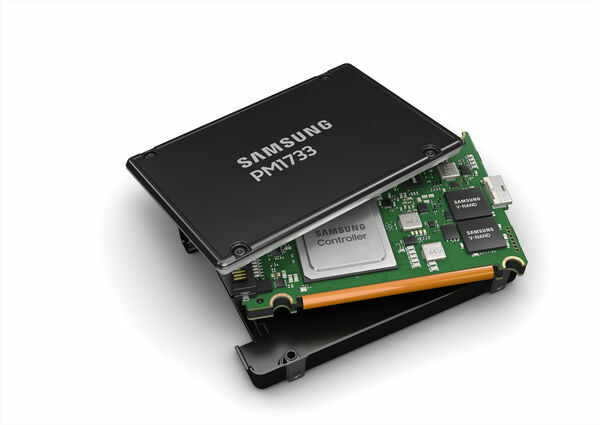
Samsung Brings Revolutionary Software Innovation to PCIe Gen4 SSDs for Maximized Storage Performance
"Industry's highest-performing SSDs integrate three key software technologies: 'fail-in-place', 'SSD virtualization' and 'V-NAND machine learning' PM1733 and PM1735 series, offered in 19 models, deliver twice the speed of Gen3 SSDs at up to 8,000MB/s Samsung Electronics, the world leader in advanced memory technology, today announced that it has brought the latest software innovations to the company’s most cutting-edge PCIe Gen4 solid state drive (SSD) series, opening up a new paradigm in SSD performance. “We are combining breakthrough speeds and capacities with revolutionary software solutions as we accelerate expansion in the premium SSD market,” said Kye Hyun Kyung, executive vice president of Memory Solution Product & Development at Samsung Electronics. “We plan to introduce additional innovation led by our most advanced (sixth-generation) V-NAND in helping to trigger a lot more growth in the global IT market.” 3 Software Innovations Create New Paradigm for Ultra-High-Capacity Datacenter SSDs The three software innovations include: 1) ‘fail-in-place (FIP) technology’ that ensures a ‘never-die’ SSD, 2) ‘virtualization technology’ that provides independent virtual workspaces for multiple users, and 3) ‘V-NAND machine learning technology’ that utilizes big data to accurately verify data validity even when operating at ultra-high speeds. Samsung’s FIP technology marks a new milestone in the 60-year history of storage by ensuring that SSDs maintain normal operation even when errors occur at the chip level, enabling a never-dying SSD for the first time in the industry. In the past, failure in just one out of several hundred NAND chips meant having to replace an entire SSD, causing system downtime and additional drive replacement cost. SSDs integrated with Samsung’s FIP software can detect a faulty chip, scan for any damage in data, then relocate the data into working chips." [...]
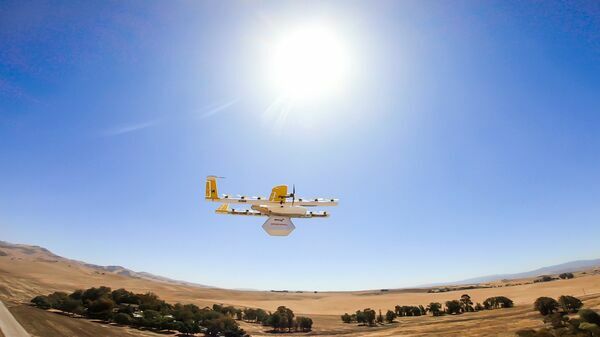
Wing Unveils Plans for First-of-its-Kind Trial with FedEx and Walgreens
"This fall, Wing, FedEx Express, Walgreens, and local retailer Sugar Magnolia will launch a pilot program to make drone delivery available to residents of Christiansburg in Virginia’s New River Valley. The trial will demonstrate the benefits of drone delivery by improving access to health care products, creating new avenues of growth for local businesses, and exploring ways to enhance efficiency of last-mile delivery service. In April, Wing became the first drone operator to be certified as an air carrier by the Federal Aviation Administration, allowing it to deliver commercial goods by drone to recipients that may be miles away. Wing’s pilot program in Virginia will be conducted as part of the U.S. Department of Transportation’s Unmanned Aircraft System Integration Pilot Program, and will be the most advanced drone delivery trial in the United States to date. Walgreens and Wing will make over-the-counter medicines and other health and wellness items available for delivery on-demand, through the air, and within minutes of ordering. Walgreens will be the first retail pharmacy to offer drone delivery in the United States." [...]
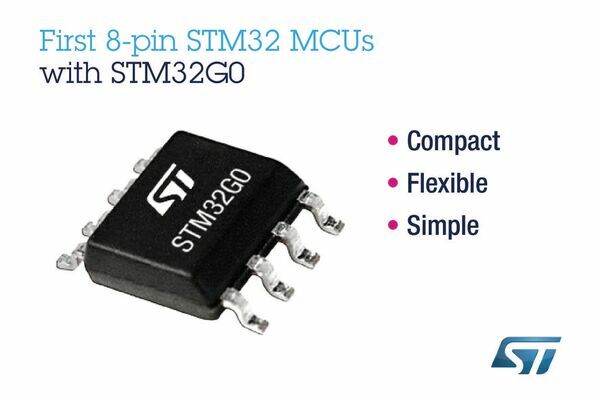
STMicroelectronics Brings 32-Bit-MCU Possibilities to Simple Applications with First 8-Pin STM32 Microcontrollers
"8-pin STM32G0 devices combine performance, compactness, flexibility, and power efficiency STM32 microcontrollers (MCU) from STMicroelectronics are now available in an 8-pin package, enabling simple embedded projects to leverage 32-bit performance and flexibility in a compact and cost-effective outline. STMicroelectronics Brings 32-Bit-MCU Possibilities to Simple Applications with First 8-Pin STM32 Microcontrollers The four new STM32G0 devices deliver a unique combination of 8-pin economy with a 64MHz Arm® Cortex®-M0+ CPU giving 59 DMIPS, up to 8Kbyte RAM and 32Kbyte Flash on-chip, and high-performing peripherals including a 2.5Msps ADC, high-resolution timer, and a high-speed SPI. With flexible mapping of I/O pins and internal MCU functions, designers can upgrade end-product functionality without trading board real-estate or bill-of-materials costs. The stability of the internal oscillator, which is accurate to ±1% over wide temperature and voltage ranges, also saves external clock components. Benefiting from the proven low-power design features of the STM32 MCU family, the 8-pin STM32G0 devices are ready to take over in energy-conscious applications governed by battery-capacity limits, eco-design legislation, or market expectations such as appliance energy ratings. The new MCUs also ease future scalability through the features available across the STM32G0 series, which offers up to 100 package pins, up to 512Kbytes Flash, additional high-performance analog peripherals, and cyber-protection features." [...]
Ciência e Tecnologia
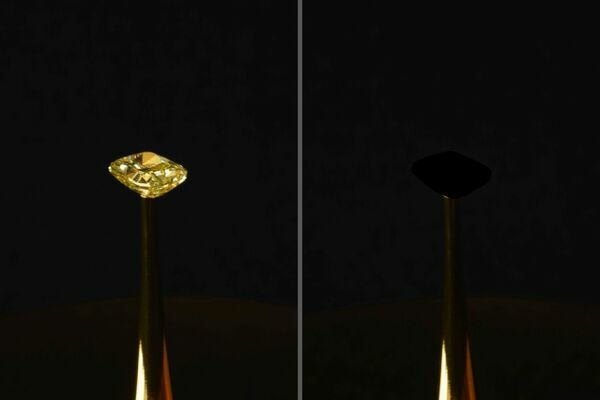
MIT engineers develop “blackest black” material to date
"Made from carbon nanotubes, the new coating is 10 times darker than other very black materials. With apologies to “Spinal Tap,” it appears that black can, indeed, get more black. MIT engineers report today that they have cooked up a material that is 10 times blacker than anything that has previously been reported. The material is made from vertically aligned carbon nanotubes, or CNTs — microscopic filaments of carbon, like a fuzzy forest of tiny trees, that the team grew on a surface of chlorine-etched aluminum foil. The foil captures at least 99.995 percent* of any incoming light, making it the blackest material on record. The researchers have published their findings today in the journal ACS-Applied Materials and Interfaces." [...]
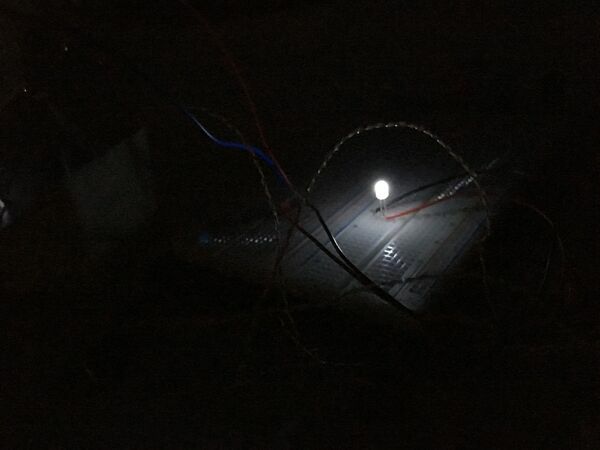
Device generates light using the cold night sky
"A cheap, thermoelectric device that harnesses the cold of space to generate electricity has been reported by international researchers who used the device to power a LED. The researchers developed the device by taking advantage of radiative cooling, where a sky-facing surface passes its heat into the atmosphere, losing some heat to space and reaching a cooler temperature than the surrounding air. While the energy it produces is relatively small, researchers say it could be used to generate power in remote locations, especially at night, and eventually be improved over time for more widespread use. No word yet whether we can also harness the cold darkness in our hearts, though. Device generates light from the cold night sky An inexpensive thermoelectric device harnesses the cold of space without active heat input, generating electricity that powers an LED at night, researchers report September 12 in the journal Joule. "Remarkably, the device is able to generate electricity at night, when solar cells don't work," says lead author Aaswath Raman (@aaraman), an assistant professor of materials science and engineering at the University of California, Los Angeles." [...]
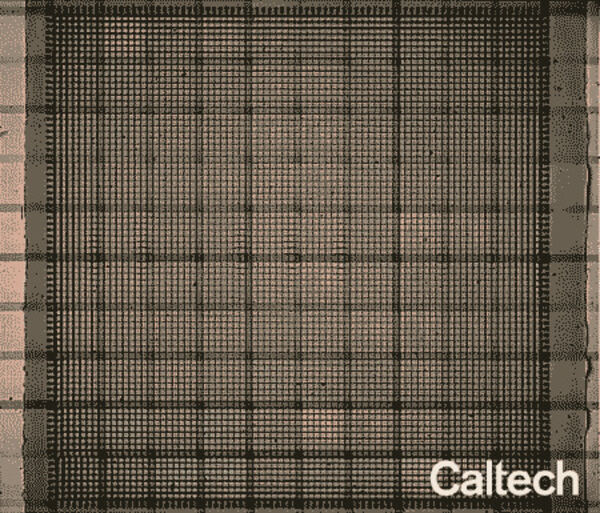
New Metamaterial Morphs Into New Shapes, Taking on New Properties
"A newly developed type of architected metamaterial has the ability to change shape in a tunable fashion. While most reconfigurable materials can toggle between two distinct states, the way a switch toggles on or off, the new material's shape can be finely tuned, adjusting its physical properties as desired. The material, which has potential applications in next-generation energy storage and bio-implantable micro-devices, was developed by a joint Caltech-Georgia Tech-ETH Zurich team in the lab of Julia R. Greer. Greer, the Ruben F. and Donna Mettler Professor of Materials Science, Mechanics and Medical Engineering in Caltech's Division of Engineering and Applied Science, creates materials out of micro- and nanoscale building blocks that are arranged into sophisticated architectures that can be periodic, like a lattice, or non-periodic in a tailor-made fashion, giving them unusual physical properties. Most materials that are designed to change shape require a persistent external stimulus to change from one shape to another and stay that way: for example, they may be one shape when wet and a different shape when dry—like a sponge that swells as it absorbs water. By contrast, the new nanomaterial deforms through an electrochemically driven silicon-lithium alloying reaction, meaning that it can be finely controlled to attain any “in-between” states, remain in these configurations even upon the removal of the stimulus, and be easily reversed." [...]
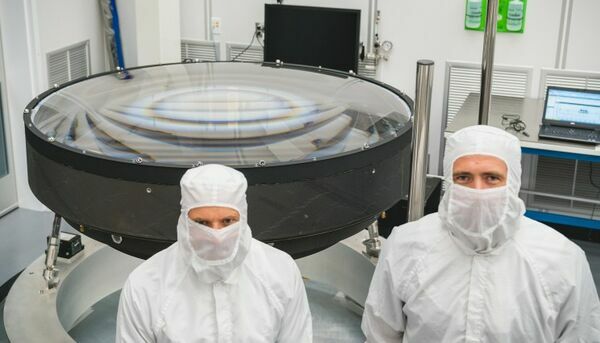
World’s largest optical lens shipped to SLAC
"When the world’s newest telescope starts imaging the southern sky in 2023, it will take photos using optical assemblies designed by Lawrence Livermore National Laboratory (LLNL) researchers and built by Lab industrial partners. A key feature of the camera’s optical assemblies for the Large Synoptic Survey Telescope (LSST), under construction in northern Chile, will be its three lenses, one of which at 1.57 meters (5.1 feet) in diameter is believed to be the world’s largest high-performance optical lens ever fabricated. The lens assembly, which includes the lens dubbed L-1, and its smaller companion lens (L-2), at 1.2 meters in diameter, was built over the past five years by Boulder, Colorado-based Ball Aerospace and its subcontractor, Tucson-based Arizona Optical Systems. Mounted together in a carbon fiber structure, the two lenses were shipped from Tucson, arriving intact after a 17-hour truck journey at the SLAC National Accelerator Laboratory in Menlo Park. SLAC is managing the overall design and fabrication, as well as the subcomponent integration and final assembly of LSST’s $168 million, 3,200-megapixel digital camera, which is more than 90 percent complete and due to be finished by early 2021. In addition to SLAC and LLNL, the team building the camera includes an international collaboration of universities and labs, including the Paris-based Centre National de la Recherche Scientifique and Brookhaven National Laboratory." [...]
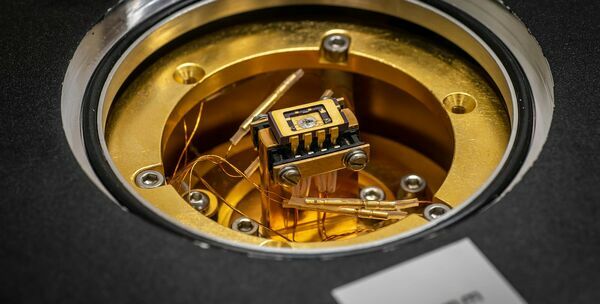
A Metal Unlike Itself
"Physicists find evidence for the mechanism by which metals may exhibit 'ferroelectricity' One of the most fundamental rules physics students learn in college is that metals cannot possess an internal electric field. This makes metals, in a sense, opposite to "ferroelectrics," which are materials that spontaneously create their own electric fields. However, for nearly 50 years, scientists have wondered if perhaps a metal could act unlike itself and display ferroelectric-like behavior. In 2013, one such candidate, called lithium osmate, or LiOsO3, was discovered. Now, Caltech researchers have uncovered details of the mechanism by which LiOsO3 acts in ferroelectric ways, a finding that may have implications for the design of new metals in the future for use in computers and other devices. "It's hard to predict at this stage what this type of material would be used for, but we are on the cutting edge of researching these metals with entirely new properties," says Nick Laurita, a postdoctoral scholar in physics and lead author of a new paper that appeared July 19 in the journal Nature Communications." [...]
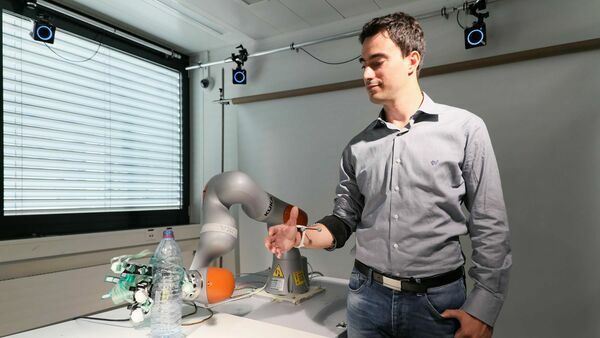
A smart artificial hand for amputees merges user and robotic control
"EPFL scientists have successfully tested new neuroprosthetic technology that combines robotic control with users’ voluntary control, opening avenues in the new interdisciplinary field of shared control for neuroprosthetic technologies. EPFL scientists are developing new approaches for improved control of robotic hands – in particular for amputees – that combines individual finger control and automation for improved grasping and manipulation. This interdisciplinary proof-of-concept between neuroengineering and robotics was successfully tested on three amputees and seven healthy subjects. The results are published in today’s issue of Nature Machine Intelligence. The technology merges two concepts from two different fields. Implementing them both together had never been done before for robotic hand control, and contributes to the emerging field of shared control in neuroprosthetics." [...]
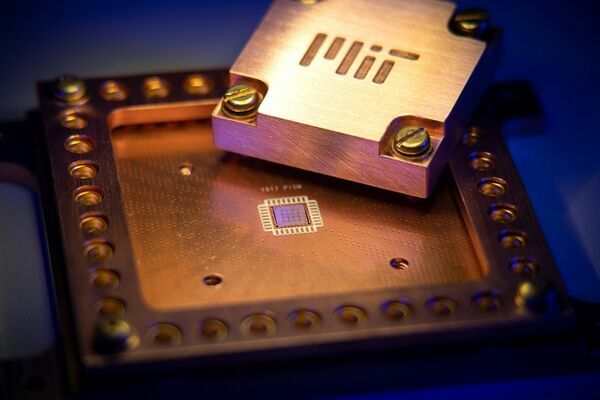
Uncovering the hidden “noise” that can kill qubits
"New detection tool could be used to make quantum computers robust against unwanted environmental disturbances. MIT and Dartmouth College researchers have demonstrated, for the first time, a tool that detects new characteristics of environmental “noise” that can destroy the fragile quantum state of qubits, the fundamental components of quantum computers. The advance may provide insights into microscopic noise mechanisms to help engineer new ways of protecting qubits. Qubits can represent the two states corresponding to the classic binary bits, a 0 or 1. But, they can also maintain a “quantum superposition” of both states simultaneously, enabling quantum computers to solve complex problems that are practically impossible for classical computers. But a qubit’s quantum “coherence” — meaning its ability to maintain the superposition state — can fall apart due to noise coming from environment around the qubit." [...]

Binghamton Researchers Find Better Way To Make Large Lithium-ion Batteries
"Mechanical engineering professors' discoveries about 'wetting' could reduce production costs, increase product quality The results of a new study led by two Binghamton University professors could reduce the production costs and increase product quality for large-sized lithium-ion batteries. Lithium-ion batteries are used widely in consumer electronic devices and are increasingly powering large-scale applications, such as electric vehicles and grid-level energy storage. However, the change from smaller coin-sized cells to bigger “pouch” cells has posed challenges to battery manufacturers, because scaling up the manufacturing processes can lead to high costs and unstable product quality. A key part of the manufacturing line is the adding of electrolyte, which permeates and fills the pores in the electrode. This “wetting” step can take several days or weeks depending on the cell chemistry. The long wetting process poses a distinctive bottleneck in the manufacturing process especially for large-size cells." [...]
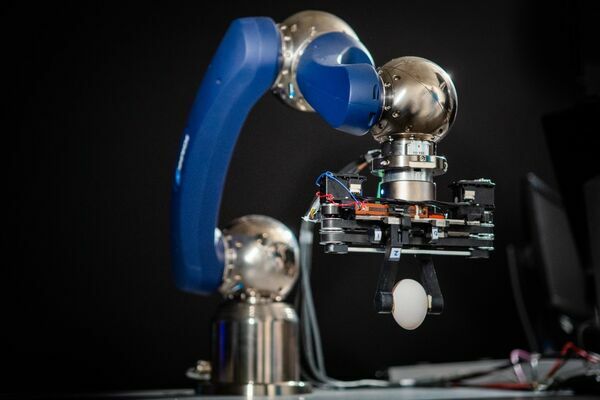
A robot with a firm yet gentle grasp
"UB engineers develop a dynamic gripper that mimics the adjustable grip of a human hand, an advancement that could improve industrial safety Human hands are remarkably skilled at manipulating a range of objects. We can pick up an egg or a strawberry without smashing it. We can hammer a nail. One characteristic that allows us to perform a variety of tasks is the ability to alter the firmness of our grip, and University at Buffalo engineers have developed a two-fingered robotic hand that shares this trait. The design of the robotic hand enables it to absorb energy from impacts during collisions. This prevents whatever the robot is holding from breaking, and also makes it safer for people to work with and near the machines." [...]
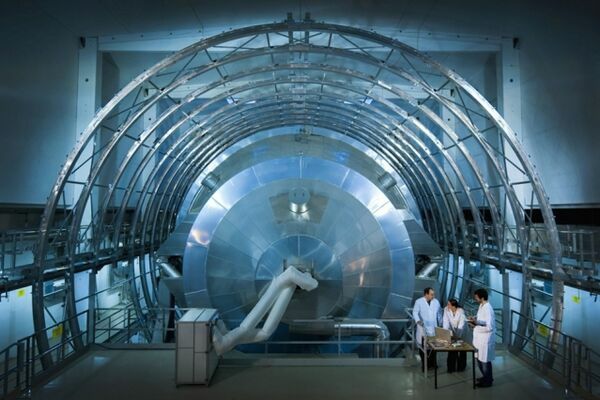
3Q: Scientists shave estimate of neutrino’s mass in half
"Joseph Formaggio explains the discovery that the ghostly particle must be no more than 1 electronvolt, half as massive as previously thought. An international team of scientists, including researchers at MIT, has come closer to pinning down the mass of the elusive neutrino. These ghost-like particles permeate the universe and yet are thought to be nearly massless, streaming by the millions through our bodies while leaving barely any physical trace. The researchers have determined that the mass of the neutrino should be no more than 1 electron volt. Scientists previously estimated the upper limit of the neutrino’s mass to be around 2 electron volts, so this new estimate shaves down the neutrino’s mass range by more than half. The new estimate was determined based on data taken by KATRIN, the Karlsruhe Tritium Neutrino Experiment, at the Karlsruhe Institute of Technology in Germany, and reported at the 2019 Conference on Astroparticle and Underground Physics last week." [...]
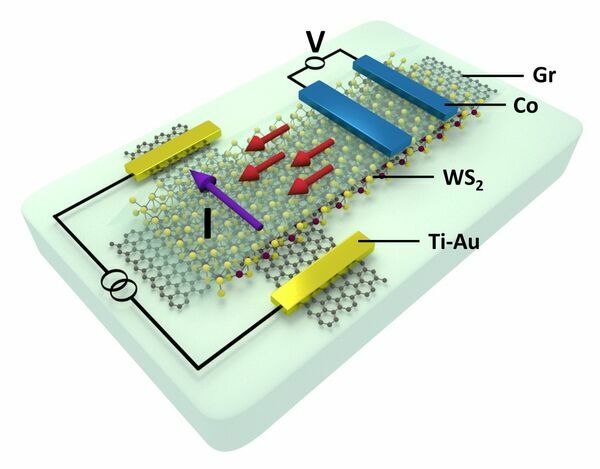
All-electronic two-dimensional spin transistors
"Physicists from the University of Groningen constructed a two-dimensional spin transistor, in which spin currents were generated by an electric current through graphene. A monolayer of a transition metal dichalcogenide (TMD) was placed on top of a graphene to induce charge-to-spin conversion in the graphene. This experimental observation was described in an article in Nano Letters on 27 August 2019. Spintronics is an attractive alternative way of creating low-power electronic devices. It is not based on a charge current but on a current of electron spins. Spin is a quantum mechanical property of an electron, a magnetic moment that could be used to transfer or store information." [...]
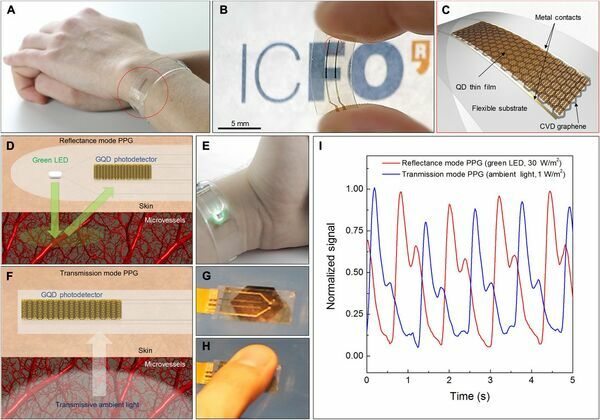
New health monitors are flexible, transparent and graphene enabled
"ICFO researchers develop low-power wearable devices that can monitor multiple vital signs of humans. New technological devices are prioritizing non-invasive tracking of vital signs not only for fitness monitoring, but also for the prevention of common health problems such as heart failure, hypertension, and stress related complications, among others. Wearables based on optical detection mechanisms are proving an invaluable approach for reporting on our bodies inner workings and have experienced a large penetration into the consumer market in recent years. Current wearable technologies, based on non-flexible components, do not deliver the desired accuracy and can only monitor a limited number of vital signs. To tackle this problem, conformable non-invasive optical-based sensors that can measure a broader set of vital signs are at the top of the end-users’ wish list. In a recent study published in Science Advances, ICFO researchers have demonstrated a new class of flexible and transparent wearable devices that are conformable to the skin and can provide continuous and accurate measurements of multiple human vital signs." [...]
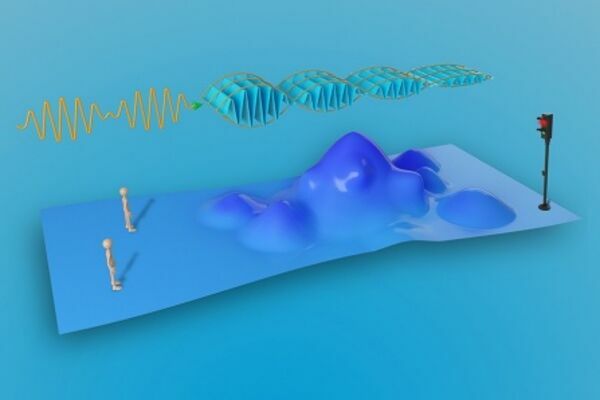
‘Traffic light’ brings quantum waves to a halt
"The quantum technology advancement could help lead to improvements in computing, data processing Stop! In the name of quantum science and engineering. The familiar refrain relates to a new achievement in quantum technology, an emerging field of research that seeks to harness the unique properties of atoms and subatomic particles. A University at Buffalo-led research team has developed a “traffic light” that can bring quantum waves to a halt. The advancement could be key to harnessing the potential of the atomic world, eventually leading to breakthroughs in computing, medicine, cryptography, materials science and other applications. “It’s an area of research of immense importance,” says UB electrical engineer Jon Bird, PhD, co-lead author of a study published recently in the journal Physical Review Letters that describes the aforementioned work." [...]
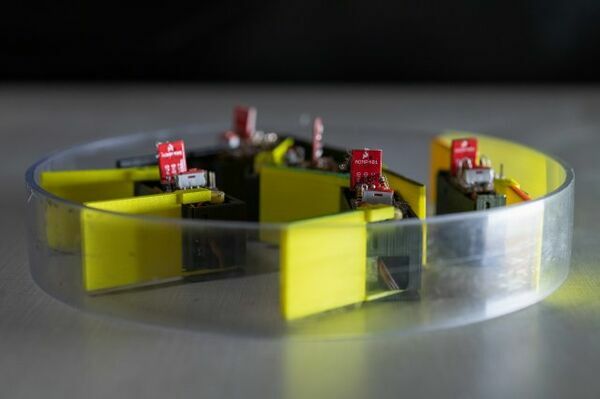
Shape-shifting robots built from smarticles could navigate Army operations
"A U.S. Army project took a new approach to developing robots -- researchers built robots entirely from smaller robots known as smarticles, unlocking the principles of a potentially new locomotion technique. Researchers at Georgia Institute of Technology and Northwestern University published their findings in the journal Science Robotics (see related links below). The research could lead to robotic systems capable of changing their shapes, modalities and functions, said Sam Stanton, program manager, complex dynamics and systems at the Army Research Office, an element of U.S. Army Combat Capabilities Development Command's Army Research Laboratory, the Army's corporate research laboratory. "For example, as envisioned by the Army Functional Concept for Maneuver, a robotic swarm may someday be capable of moving to a river and then autonomously forming a structure to span the gap," he said. The 3D-printed smarticles -- short for smart active particles -- can do just one thing: flap their two arms. But when five of these smarticles are confined in a circle, they begin to nudge one another, forming a robophysical system known as a "supersmarticle" that can move by itself." [...]
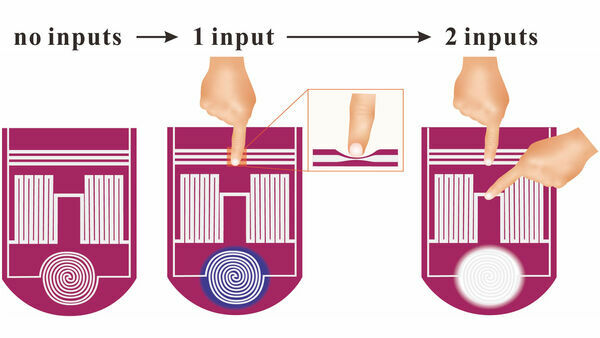
‘Soft Tactile Logic’ Tech Distributes Decision-Making Throughout Stretchable Material
"Inspired by octopuses, researchers have developed a structure that senses, computes and responds without any centralized processing – creating a device that is not quite a robot and not quite a computer, but has characteristics of both. The new technology holds promise for use in a variety of applications, from soft robotics to prosthetic devices. “We call this ‘soft tactile logic,’ and have developed a series of prototypes demonstrating its ability to make decisions at the material level – where the sensor is receiving input – rather than relying on a centralized, semiconductor-based logic system,” says Michael Dickey, co-corresponding author of a paper on the work and Alcoa Professor of Chemical and Biomolecular Engineering at North Carolina State University. “Our approach was inspired by octopuses, which have a centralized brain, but also have significant neuronal structures throughout their arms. This raises the possibility that the arms can ‘make decisions’ based on sensory input, without direct instruction from the brain.” At the core of the soft tactile logic prototypes is a common structure: pigments that change color at different temperatures, mixed into a soft, stretchable silicone form. That pigmented silicone contains channels that are filled with metal that is liquid at room temperature, effectively creating a squishy wire nervous system." [...]
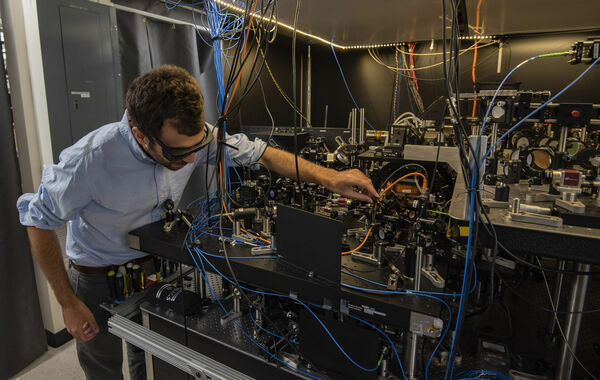
JILA’s Novel Atomic Clock Design Offers ‘Tweezer’ Control
"JILA physicists have demonstrated a novel atomic clock design that combines near-continuous operation with strong signals and high stability, features not previously found together in a single type of next-generation atomic clock. The new clock, which uses laser “tweezers” to trap, control and isolate the atoms, also offers unique possibilities for enhancing clock performance using the tricks of quantum physics. Described in a paper published Sept. 12 by the journal Science, the new clock platform is an array of up to 10 strontium atoms confined individually by 10 optical tweezers, which are created by an infrared laser beam aimed through a microscope and deflected into 10 spots. JILA is a joint research and training institute operated by the National Institute of Standards and Technology (NIST) and the University of Colorado Boulder. While JILA researchers have yet to fully evaluate the new clock’s performance, preliminary data suggest the design is promising. The tweezer clock is “on duty” self-verifying its performance 96% of the time because it needs little downtime to prepare new atoms and the atoms well isolated, so they are less likely to interfere with one another." [...]
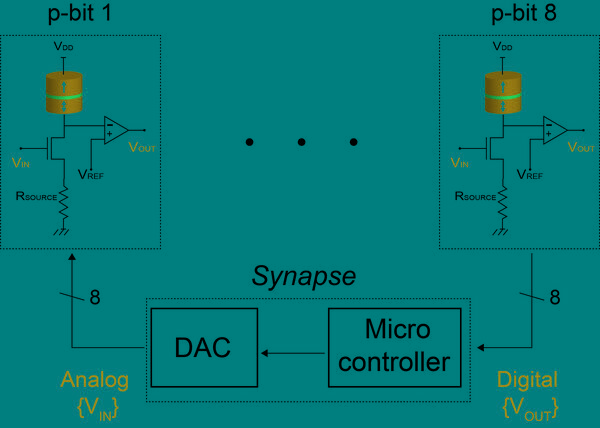
‘Poor man’s qubit’ can solve quantum problems without going quantum
"Researchers demonstrate the first hardware for a ‘probabilistic computer’ It may still be decades before quantum computers are ready to solve problems that today’s classical computers aren’t fast or efficient enough to solve, but the emerging “probabilistic computer” could bridge the gap between classical and quantum computing. Engineers at Purdue University and Tohoku University in Japan have built the first hardware to demonstrate how the fundamental units of what would be a probabilistic computer – called p-bits – are capable of performing a calculation that quantum computers would usually be called upon to perform. The study, published in Nature on Wednesday (Sept. 18), introduces a device that serves as a basis for building probabilistic computers to more efficiently solve problems in areas such as drug research, encryption and cybersecurity, financial services, data analysis and supply chain logistics. Today’s computers store and use information in the form of zeroes and ones called bits. Quantum computers use qubits that can be both zero and one at the same time. In 2017, a Purdue research group led by Supriyo Datta, the university’s Thomas Duncan Distinguished Professor of Electrical and Computer Engineering, proposed the idea of a probabilistic computer using p-bits that can be either zero or one at any given time and fluctuate rapidly between the two." [...]
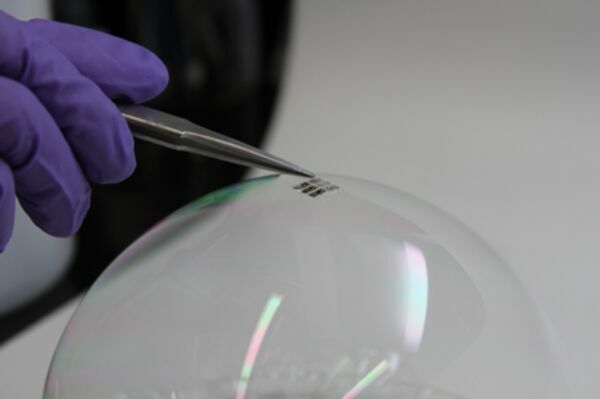
Ultra-Thin, Flexible Solar Cells
"In Situ Vapor-Deposited Parylene Substrates for Ultra-thin, Lightweight Solar Cells Nearly all modern solar panels have one thing in common: glass. A 3-millimeter-thick glass sheet protects and supports the solar cells beneath it, but also contributes up to 90% of the panel's total weight. That heft adds to the cost of transporting and installing solar PV systems, which today makes up a large part of the cost of solar electricity. Rigid and heavy cells also limit the potential for solar cells to power lightweight mobile devices and other applications. Flexible plastic films have been studied as alternatives to glass substrates for solar cells for years. Examples include variants of polyethylene terephthalate (PET)—used in soda bottles and plastic wrap—and polyethylene naphthalate (PEN)—used in beer bottles and sailcloth." [...]

WVU astronomers help detect the most massive neutron star ever measured
"West Virginia University researchers have helped discover the most massive neutron star to date, a breakthrough uncovered through the Green Bank Telescope in Pocahontas County. The neutron star, called J0740+6620, is a rapidly spinning pulsar that packs 2.17 times the mass of the sun (which is 333,000 times the mass of the Earth) into a sphere only 20-30 kilometers, or about 15 miles, across. This measurement approaches the limits of how massive and compact a single object can become without crushing itself down into a black hole. The star was detected approximately 4,600 light-years from Earth. One light-year is about six trillion miles. These findings, from the National Science Foundation-funded NANOGrav Physics Frontiers Center, were published today (Sept. 16) in Nature Astronomy." [...]

Team closes in on 'holy grail' of room temperature quantum computing chips
"To process information, photons must interact. However, these tiny packets of light want nothing to do with each other, each passing by without altering the other. Now, researchers at Stevens Institute of Technology have coaxed photons into interacting with one another with unprecedented efficiency—a key advance toward realizing long-awaited quantum optics technologies for computing, communication and remote sensing. The team, led by Yuping Huang, an associate professor of physics and director of the Center for Quantum Science and Engineering, brings us closer to that goal with a nano-scale chip that facilitates photon interactions with much higher efficiency than any previous system. The new method, reported as a memorandum in the Sept. 18 issue of Optica, works at very low energy levels, suggesting that it could be optimized to work at the level of individual photons—the holy grail for room-temperature quantum computing and secure quantum communication. "We're pushing the boundaries of physics and optical engineering in order to bring quantum and all-optical signal processing closer to reality," said Huang." [...]

IBM Opens Quantum Computation Center in New York; Brings World's Largest Fleet of Quantum Computing Systems Online, Unveils New 53-Qubit Quantum System for Broad Use
"Fleet of ten quantum systems benefit from the industry's most powerful hardware with improved stability to propel quantum computing forward Today, IBM (NYSE: IBM) announced the opening of the IBM Quantum Computation Center in New York State. The new center expands the world's largest fleet of quantum computing systems for commercial and research activity that exist beyond the confines of experimental lab environments. The IBM Quantum Computation Center will support the growing needs of a community of over 150,000 registered users and nearly 80 commercial clients, academic institutions and research laboratories to advance quantum computing and explore practical applications. The global community of users have run more than 14 million experiments on IBM's quantum computers through the cloud since 2016, and published more than 200 scientific papers. To meet growing demand for access to real quantum hardware, ten quantum computing systems are now online through IBM's Quantum Computation Center. The fleet is now composed of five 20-qubit systems, one 14-qubit system, and four 5-qubit systems." [...]

New approach suggests path to emissions-free cement
"MIT researchers find a way to eliminate carbon emissions from cement production — a major global source of greenhouse gases. It’s well known that the production of cement — the world’s leading construction material — is a major source of greenhouse gas emissions, accounting for about 8 percent of all such releases. If cement production were a country, it would be the world’s third-largest emitter. A team of researchers at MIT has come up with a new way of manufacturing the material that could eliminate these emissions altogether, and could even make some other useful products in the process. The findings are being reported today in the journal PNAS in a paper by Yet-Ming Chiang, the Kyocera Professor of Materials Science and Engineering at MIT, with postdoc Leah Ellis, graduate student Andres Badel, and others. “About 1 kilogram of carbon dioxide is released for every kilogram of cement made today,” Chiang says." [...]
Modelos 3D
Com a disponibilidade de ferramentas que permitem dar azo a nossa imaginação na criação de peças 3D e espaços como o thingiverse para as publicar, esta rubrica apresenta alguns modelos selecionados que poderão ser úteis.
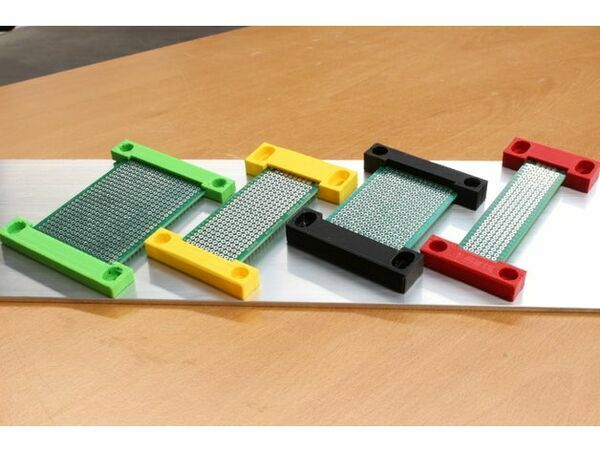
Customizable PCB Holder / Einstellbarer Paltinenhalter
"This is an improved Version of https://www.thingiverse.com/thing:3752530 with the main difference being, that it is uses M4 cylindrical head screws instead of countersunk M4 screws. It has also the big addition, that it is adaptable to different PCB sizes. That is achieved through the spreadsheet functionality in freecad. I made a few working examples fitting these PCBs (*https://amzn.to/2Z9HYOr). " [...]
Documentação
A documentação é parte essencial do processo de aprendizagem e a Internet além de artigos interessantes de explorar também tem alguma documentação em formato PDF interessante de ler. Todos os links aqui apresentados são para conteúdo disponibilizado livremente pelo editor do livro.
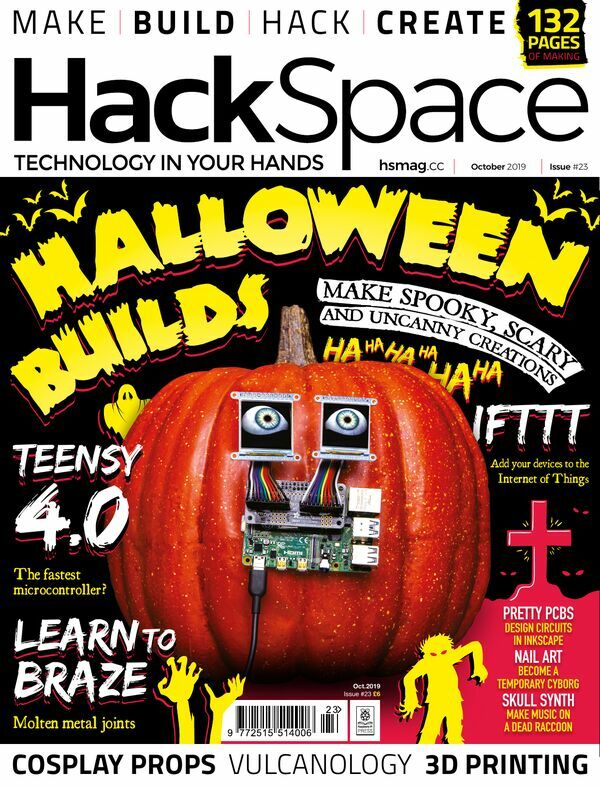
HackSpace magazine #23
"Turn to the fun (and dark) side of making with a look at the best crazy, creative Halloween builds around – then have a go at making your own! Terrify and enchant your friends with a dead musical raccoon Add movement to cosplay with capacitive touch Fabricate artistic PCBs with Inkscape and KiCad Make joints out of molten metal" [...]
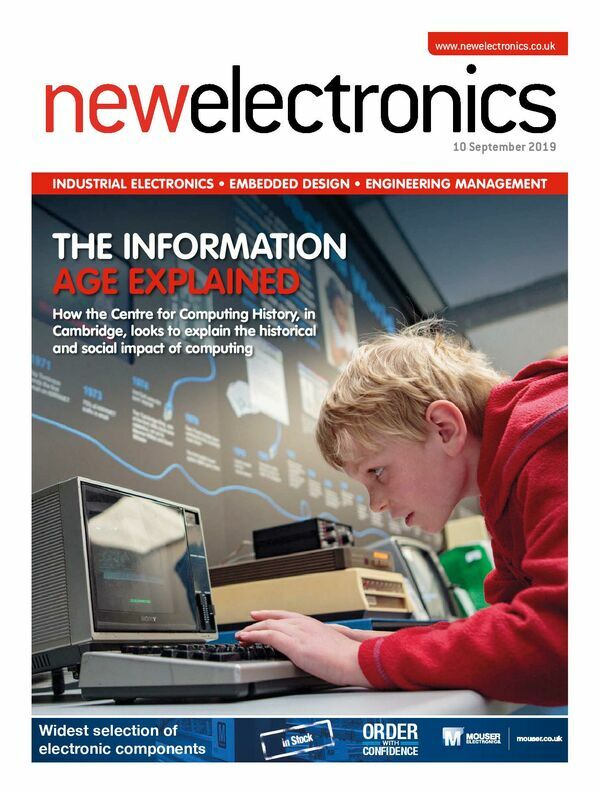
newelectronics 10 Setembro 2019
"New Electronics is a fortnightly magazine focusing on technological innovation, news and the latest developments in the electronics sector. Downloadable as a digital page turner or pdf file, or offered as a hard copy, the New Electronics magazine is available in a format to suit you. " [...]
Projetos Maker
Diversos Projetos interessantes.
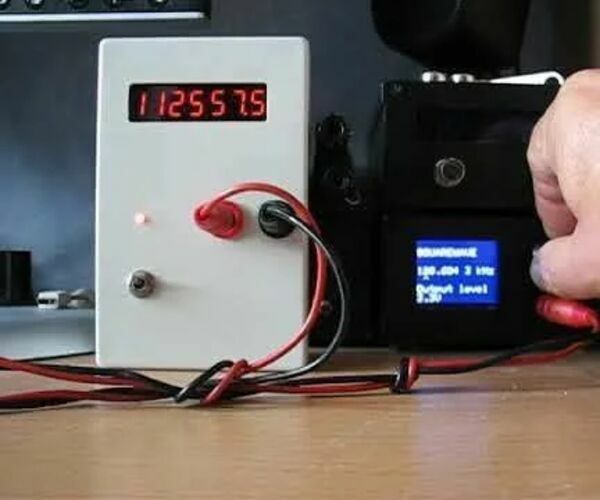
High Resolution Frequency Counter
"This instructable shows a reciprocal frequency counter capable of measuring frequencies fast and with reasonable precision. It is made with standard components and can be made in a weekend (it took me a bit longer :-) ) The old school way to measure the frequency of a signal is to use a logic AND-gate, feed the signal to be measured into one port and a signal with an exactly 1 second high time to the other port and count the output. This works quite well for signals of a few kHz well into the GHz. But what if you want to measure a low frequency signal with good resolution? Say you want to measure the frequency of mains (here 50 Hz). With the old school method you will see a constant 50 on your display if you are lucky, but more likely you will see the display switch from 49 to 50 or 50 to 51." [...]
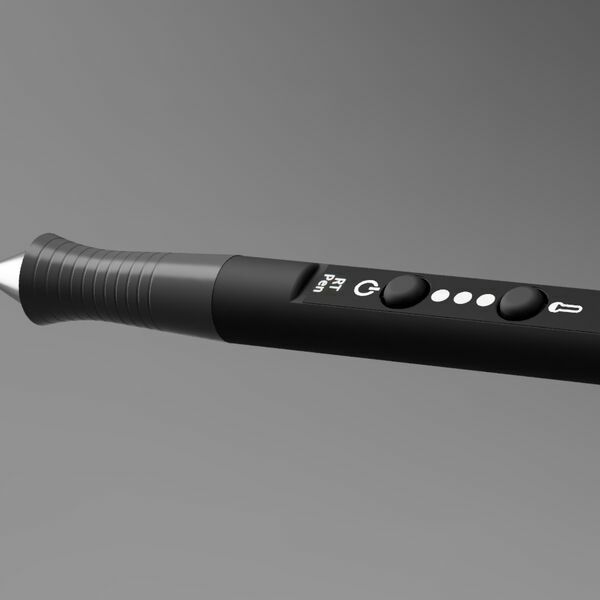
USB-C-PD Soldering Pen for Weller RT Tips
"Small and powerfull controlling unit powerd from USB-C-PD This is my project to build a controller unit for the Weller RT-tips. The intention for this project was to built a cheaper and even more compact controlling unit for one of the best soldering tips for small and medium sized soldering joints. It aims to professionals who not want to pay from around 700 for a big controlling unit but also like the professional feel and results of these tips. Another big benefit is the high variety of different tips. By the time this project wasn't cheaper than buying a finishend Weller station, but I still have lots of fun working on this project. However, I have a soldering pen which fulfill all my needs!" [...]
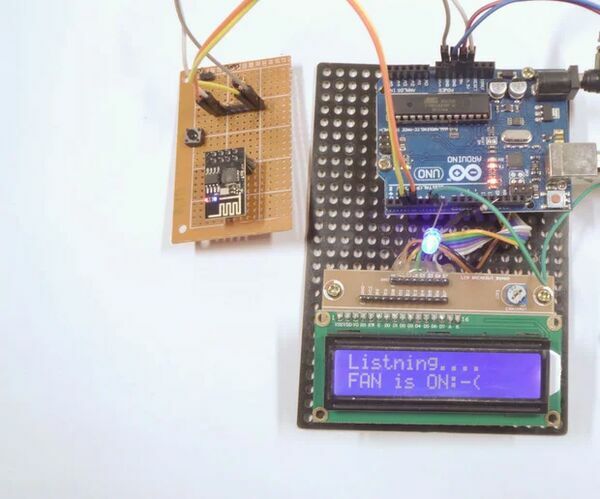
Home Automation Using Google Assistant With Esp8266-01 and Thingspeak
"In this tutorial, we are going to learn how create Thingspeak account and linked with IFTTT to control the home appliance with Google assistance Voice command. The idea behind this is to control home devices with your own voice. On the market there are lot of devices available to do that. But making your own hardware is awesome. So, let's do it. Build your own personal assistant that will do the work for you." [...]
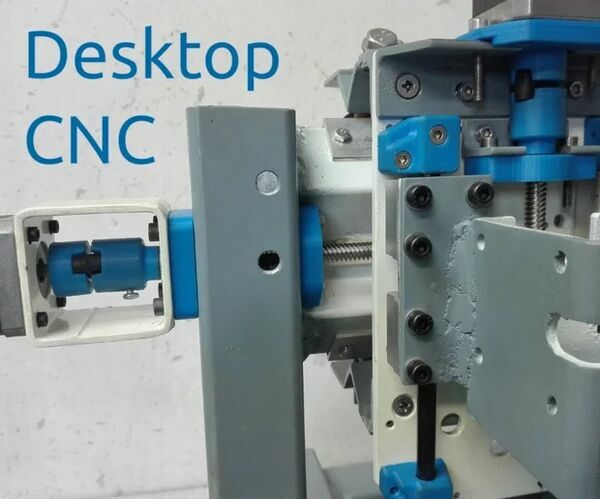
CNC Router
"Here's a basic overview of how my desktop CNC was built, I can't really provide a step by step guide, because this project has a lot of small details, and also some questionable design choices. So this article is meant to serve as inspiration to others, who are considering a simular build. It is a small 3 axis CNC router, controlled by GRBL, it is capable of milling wood ( plywood, MDF and stuff ), plastics like PE, HDPE and acrylic and aluminium, with reasonably high precision and speed. " [...]
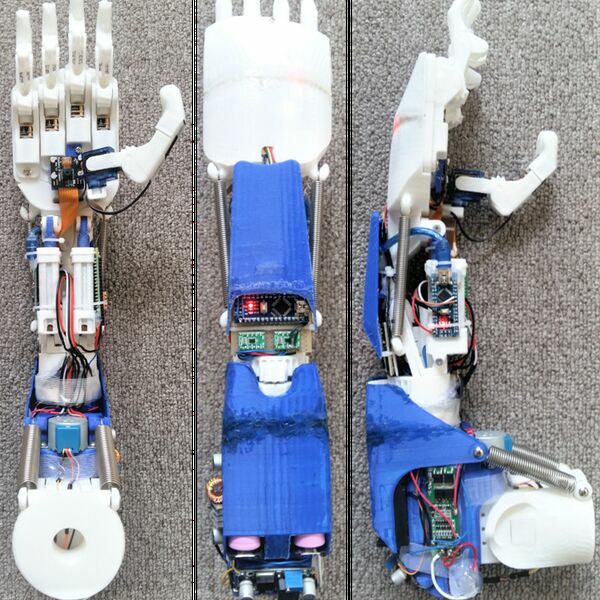
3D printed prosthesis with CV, BCI and EMG
"An affordable 3D printed prosthesis using computer vision to track and choose grip patterns for the user. Support BCI and EMG as well. This is a transhumeral prosthesis I have built to help a congenital limb deficiency patient in my country. The prosthesis is equipped with computer vision (object recognition and object tracking) to support wrist movement and choosing best grip patterns for object handling. The prosthesis is also equipped with a simple brain-computer interface and myoelectric sensor so that user could control the prosthesis at will, or give consent to the actions chosen by the prosthesis. The prosthesis weights less than 1 kg, and has high dexterity." [...]
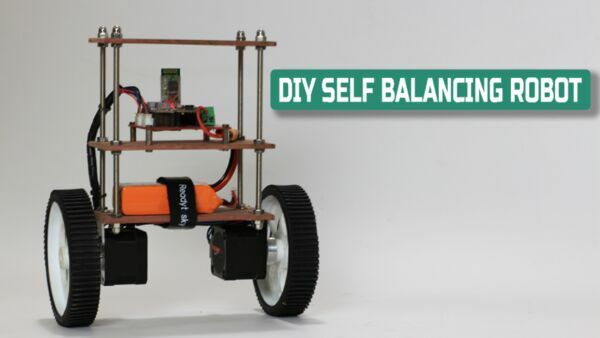
DIY Self Balancing Robot
"Hello friends this post is about DIY self balancing robot in this post I’ll show how you can build your own Self balancing robot. I have tried to build the project but failed not get results as expected. but this robot turn out quite good and accurate, though this is not perfect but best as compare to my previous bots. I have use a custom made PCB, Arduno nano, MPU6050, A4988 driver, HC-05 bt module, MDF board and some hardware to build this self balancing robot, detail material list you can found further in this post. Balancingwii firmware and EZ-GUI android app is used in this project to control robot via Bluetooth connection. So lets begin with some basic of self balancing robot." [...]
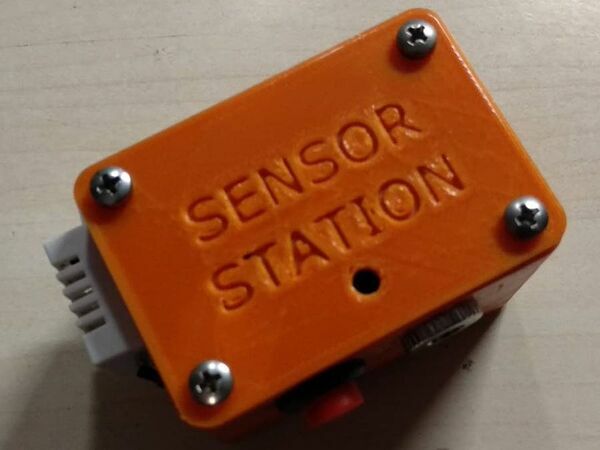
Arduino Wireless Weather Station
"In this DIY guide I will show you how to make your own wireless weather station. In this project I decided to make my own PCB that is based on Arduino UNO microcontroller - Atmega328p. Bellow you will find the electronic schematic with PCB layout so you can easily produce it. Let's get started. " [...]
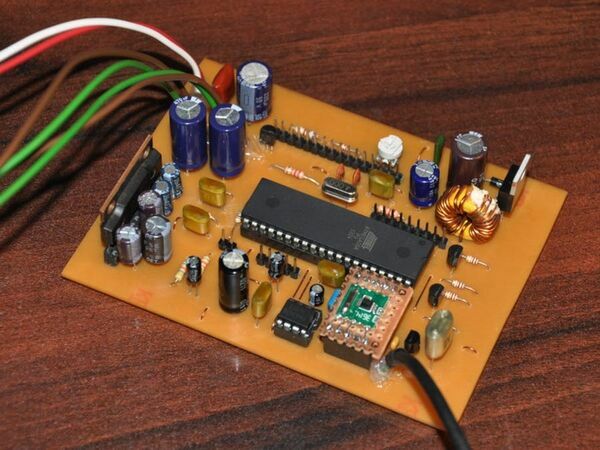
FM Stereo Radio Receiver with RDS
"This tuner circuit is a quick prototype which I built to test the RDA5807M FM radio tuner IC. RDA5807M is a single-chip tuner IC with RDS and MPX decoder, and it equipped with I2C interface for control. The main reason to build this prototype is to understand the behavior of this chip. At the time of this design, the website of the RDA microelectronics is not accessible from my location. Because of this reason, I download different versions of RDA5807M datasheets from the internet. While going-through those datasheets, I observed that it comes with limited information." [...]
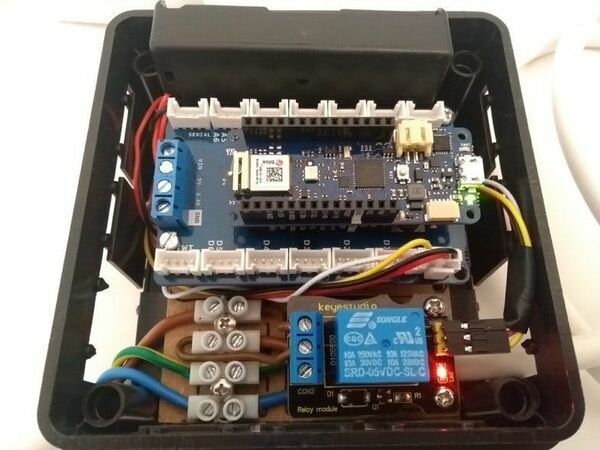
Smart Plug with Arduino MKR WiFi 1010
"In this tutorial we are going to create a smart plug to turn on or off the light of a lamp remotely using Google's voice assistant. In this tutorial we are going to create a smart plug to turn on or off the light of a lamp remotely using Google's voice assistant. We will use the IFTTT web service. This service allows us to create / schedule actions between different applications. In our case we will link the Google voice assistant with the Adafruit IO Cloud. The procedure will be as follows: Using the Google voice assistant and saying the voice command "turn on the light" will record the "ON" value in a "feed" of the Adafruit IO Cloud and when we say "turn off the light" the value "OFF" will be recorded." [...]

Music Sensor
"There is no better components than LEDs So in this project i just made a Music Sensor that dances with the SOUND !! " [...]
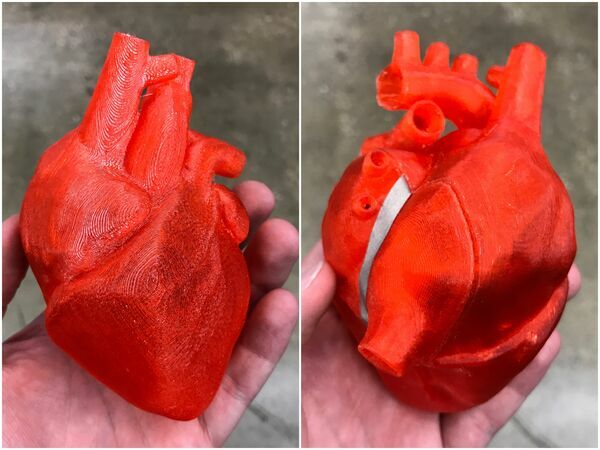
Capacitive Touch Pulsing Heart
"Hold this heart in your hand and it automatically detects your touch and begins to glow, pulsing like a beating heart. A Circuit Playground Express tucked away inside a 3D printed anatomical heart model uses its capacitive touch pad to detect when it's being held and pulse its onboard neopixels in response. In addition to the materials listed above, for this project you will also need: Access to a 3D printer White or Red filament A piece of sandpaper Soldering iron (optional) Read on to learn how to build your own! " [...]
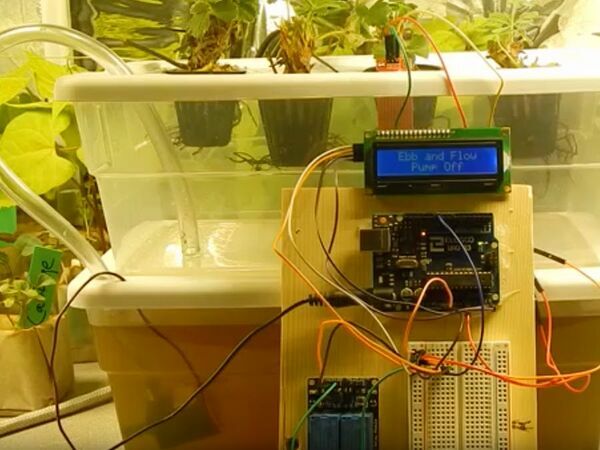
Ebb and Flow Hydroponic Mini System
"Grow your own lettuce, greens, and strawberries with a soil-less system that will give them just the right amount of nutrient rich water. This Mini Ebb and Flow Planter can support small plants such as lettuce. Use mineral rich water with a pH around 6.5. " [...]
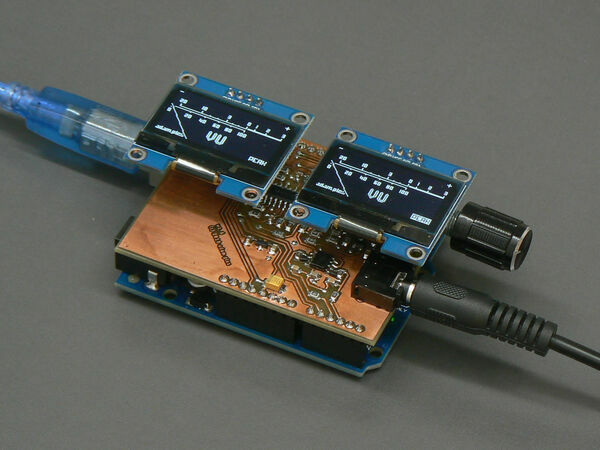
OLED display audio VU meter – AVR/Arduino project
"Today we are going to build one of the most important tools in sound mixing; A audio VU (volume unit) meter based on an Arduino/AVR microcontroller. This project serves to demonstrate how the knowledge of electronics can be applied to build solutions for any part of your day to day life. A volume unit (VU) meter or standard volume indicator (SVI) as it’s sometimes called, is a device which displays the audio signal level of an audio signal. It is essentially a basic voltmeter (fitted with transducers to convert sound to voltage) that takes a simple average of the signal and displays it with an attack and release time of around 300 ms. It was originally designed as a kind of loudness meter, rather than as a peak meter, but it is generally used in audio recording to help make sure you’re recording at appropriate levels. Today’s version of the project is based on a project started by Adam Ples on Github and it uses AVR ATMega88/168/328 (and ATMega48 if possible) which makes it compatible with Arduino boards like the Uno, Nano and Due." [...]
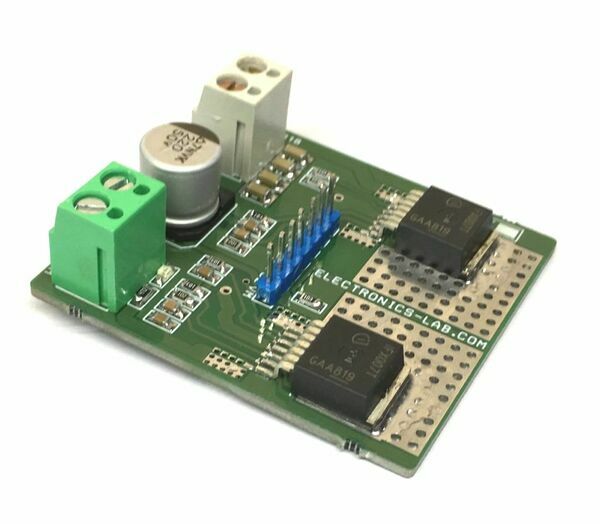
High Power Bidirectional DC Motor Driver using IFX007T
"This motor driver circuit can drive a brushed DC motor with up to 250W of continuous load. The project can be controlled with the general logic IO-Ports of any microcontroller. Either an Arduino Uno or other microcontroller can be used as the control board. The project uses two IFX007T IC from Infineon. Each IC provides half-bridge operation featuring one P-channel high side MOSFET and one N-channel low side MOSFET with an integrated driver IC. The IFX007T half-bridge is easy to control by applying logic level signals to the IN and INH pin." [...]
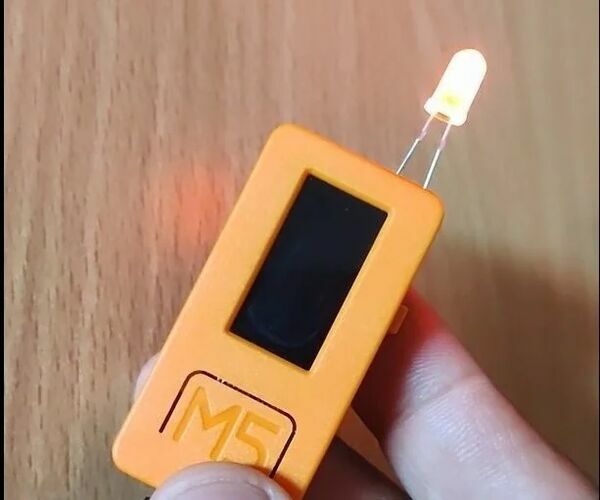
Getting Started With M5stack M5stick-C | How to Use GPIO Pins of ESP32 PICO Based M5stack M5stick C
"Hi Guys, in this tutorial we will learn how to use m5stick-C and how we can use the GPIOs of m5stick-C to provide some output or read some input. So in this instructables we will see how to connect a LED and run a LED blink code and we will also write a code to turn on or off the LED from the push button provided on m5stick-C board. " [...]
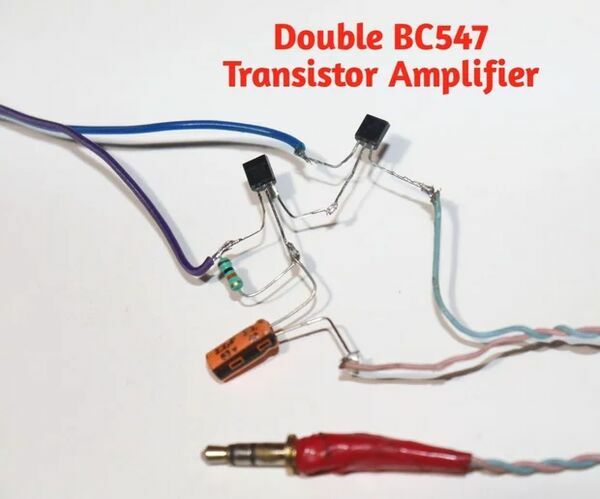
BC547 Double Transistor Audio Amplifier
"Today I am going to make an amplifier using Double transistor of BC547. Let's get started," [...]

The World's First Vacuum Cleaner in an Altoids Tin
"I love making tiny vacuum cleaners and have made many of them since I first started over 30 years ago. The first ones were in black plastic film canisters with grey clip-on lids or party popper cases. It all started when I saw my mum struggling with a Hoover upright which had a paper bag to collect the dust. The bag would split and need replacing and they weren't cheap. 'Why do vacuum cleaners need bags?' I thought to myself and set to work making a tiny bagless vacuum cleaner." [...]
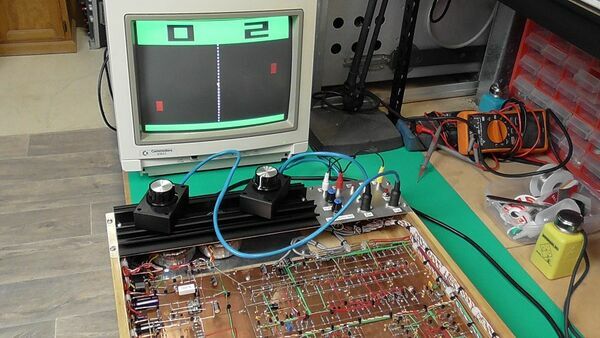
Video Pong for one or two players
"My Oscilloscope Pong project didn't really quench my interest in designing and building something big with discrete semiconductor circuitry. And let's face it, a derivative of Pong rendered in primitive vector graphics on an X-Y oscilloscope display just doesn't have the allure of a version that renders proper raster-scanned graphics on a video display monitor. So, once again, I simply did what was plainly logical and went ahead and designed and built this. The pdf document linked to above contains a bit more of a description, more photos and the complete schematic diagrams so than anyone so inclined could build a duplicate. Maybe something to try if your are bored with playing with Arduinos? " [...]
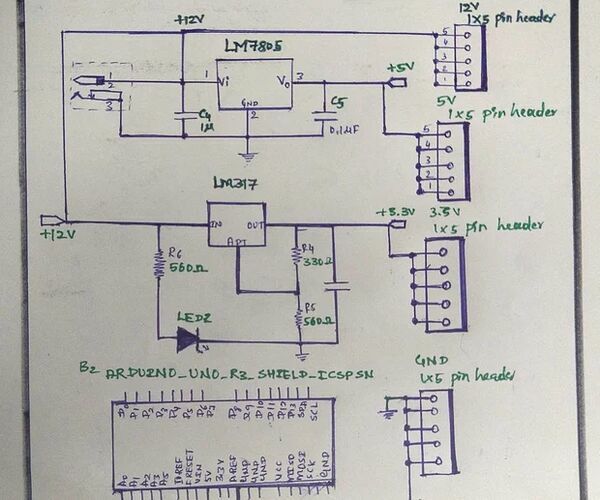
Arduino Power Supply Shield With 3.3v, 5v and 12v Output Options (Part-1)
"Hello guys! I am back with another Instructable. When developing electronic projects, the power supply is one of the most important parts of the whole project and there is always a need for multiple output voltage power supply. This is because different sensors need different input voltage and current to run efficiently. So today we will be designing a Multipurpose Power Supply. The Power Supply will be an Arduino UNO Power Supply Shield which will output multiple voltage ranges such as 3.3V, 5V, and 12V." [...]
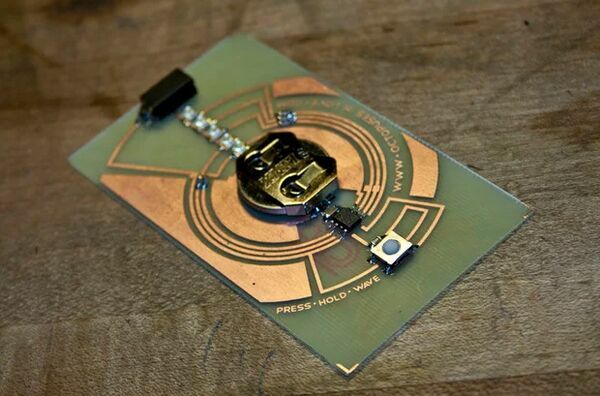
Complete Circuit Board Lab & POV Business Card
"Introduction Though there are many Instructables on some aspect of how to make circuit boards, this one is different. It's an instructable on how to make the things you need to make circuit boards, specifically, a flamboyant business card toy. Over the past six months I have set up fairly complete printed circuit board fabrication lab in my apartment, cheaply and safely, and I intend to cover all aspects of the process, from start to finish. Some of it you may have seen before, but here it is all in one place, with references. All in all, I had to design and build an airtight etch tank out of laser cut acrylic, an SMD vacuum pickup tool, a reflow oven and temperature controller, refine the toner transfer process with a modified laminator, build a custom programming jig, and of course design, program and build from scratch every aspect of the thing I did all this for in the first place: my business card. In the end it was well worth the time to have the ability to make circuit boards appear in my hands in an evening." [...]
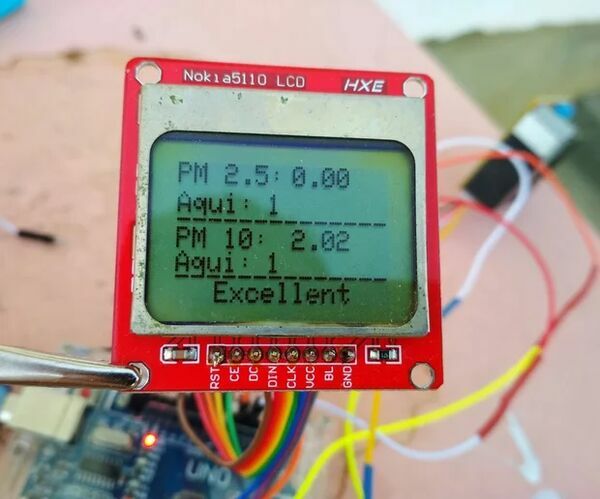
Air Quality Monitoring With DSM501A With Nokia LCD
"Hello friends! In this short instructable i will show you how to monitor the air qulaity at your home or anywhere. It is quite easy to assemble this budget price air quality monitoring station. " [...]
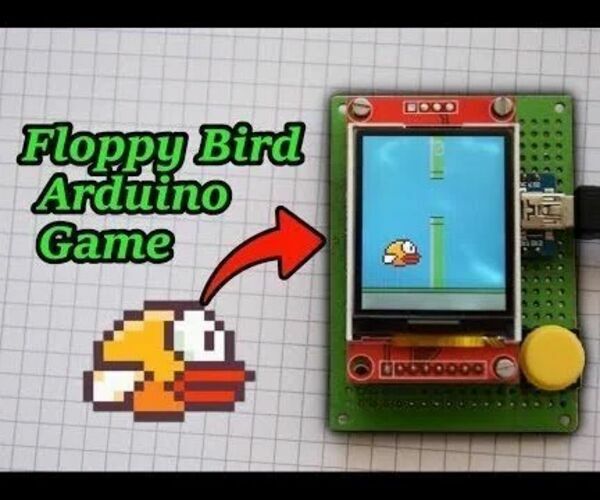
Flappy Bird Game on Arduino
"Flappy Bird is a side-scrolling mobile game featuring 2D retro style graphics. The objective is to direct a flying bird, named Flappy, who moves continuously to the right, between sets of Mario-like pipes. If the player touches the pipes, they lose. Faby briefly flaps upward each time that the player taps the buttons; if the button is not tapped, Faby falls because of gravity; each pair of pipes that he navigates between earns the player a single point. List elements: Arduino nano PerfBoard 5x7cm Button Wires" [...]
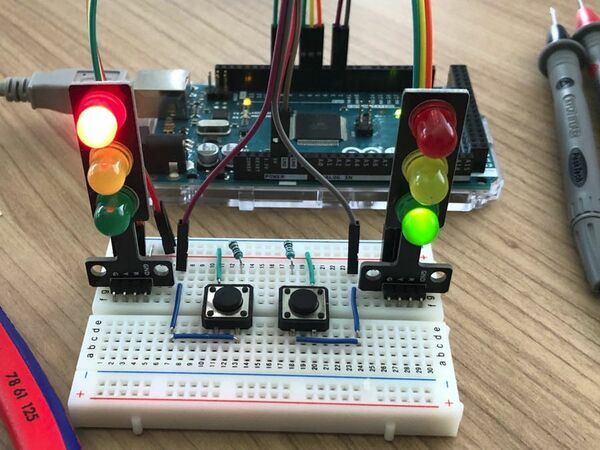
Traffic Lights Using Finite State Machine in C++ for Arduino
"Pedestrian traffic light for an Arduino by using YAKINDU Statechart Tools to implement a Finite State Machine (FSM) in C and C++. I'm going to show you how to program a pedestrian traffic light for Arduino for C++ with a finite state machine by using YAKINDU Statechart Tools. This will demonstrate the power of state machines and can be used as a blueprint for further projects. Pedestrian Traffic Light At first, I need to specify how the pedestrian traffic light should work. I've tried to summarize the bullet points: - Two traffic lights are used - one for the cars, the other for the pedestrians - Traffic light can be turned on by using a button - Pedestrian can request crossing the street by pressing a button - Turned off traffic light is indicated by blinking both yellow LEDs - After turning on, the traffic light waits for 10 seconds in safe mode - After safe mode, cars always have a green phase until a pedestrian starts a request - Pedestrian request for crossing is indicated by toggling yellow LED Additionally, there are some time events depending on the way of how a traffic light works. Build the Circuit Let's start set up the circuit." [...]
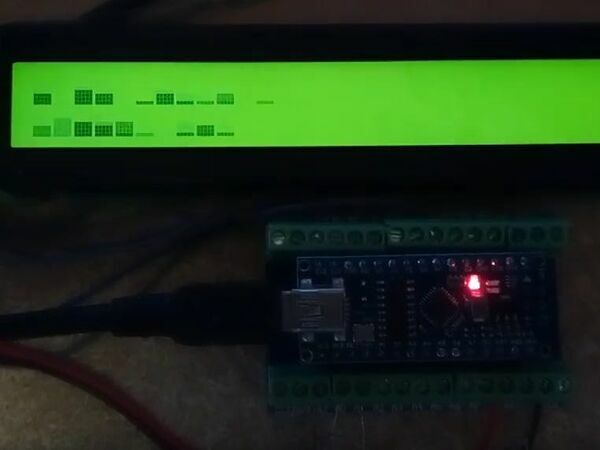
2 x 16-Band Audio Spectrum Analyzer with LCD
"2 x 16-band audio spectrum analyzer with Arduino Nano and 2 x 16 chars LCD display. This project is based on Shajeeb's project. This little and easy-to-do project is based on an idea to represent audio spectrum data: 32-Band Audio Spectrum Visualizer Analyzer by Shajeeb. However, I have a 2 x 40chars big LCD, and I don't wanted to create LED based bars, plus not willing to use additional hardwares. Additionally, my friends asked me to create a bit smaller version. So I changed the codes and created a 2 x 16 bars, stereo audio spectrum analyzer." [...]
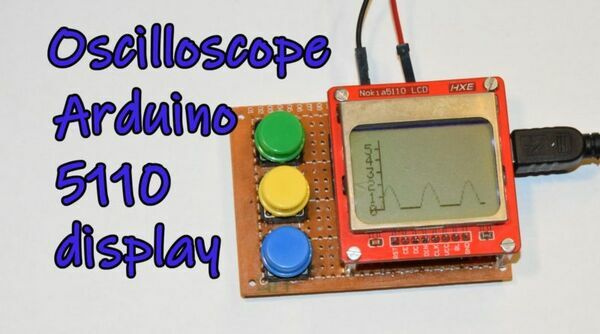
Oscilloscope Arduino 5110 Display
"Today I will show you a simple oscilloscope with a 5110 display. There are 3 UP, DOWN and SELECT buttons for operating the oscilloscope. In the menu you can change the contrast, time and resolution. List Elements: Arduino Display 5110 Perfboard 5x7cm 5x 10k resistor 3 buttons" [...]
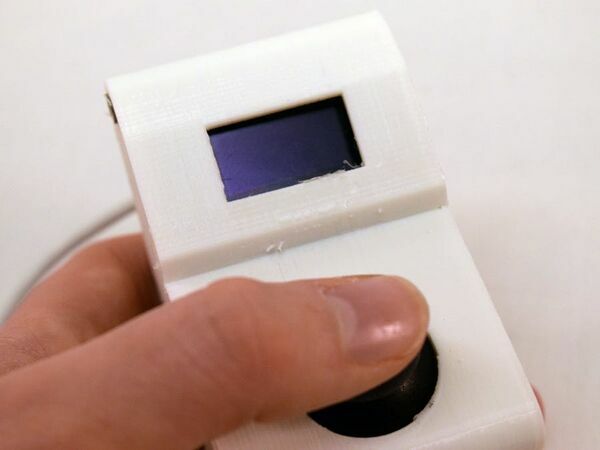
ATtiny85 Mini Arcade: Snake
"A miniature gaming console that lets you play snake using only an ATtiny85 and a simple I2C OLED display. " [...]
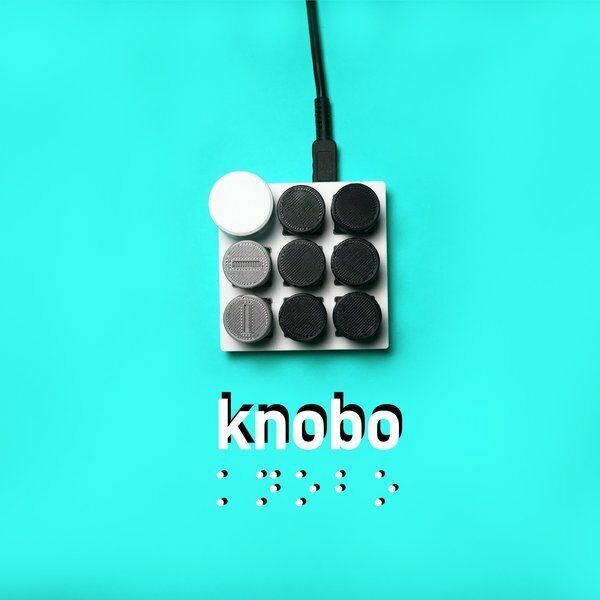
Knobo
"An Intuitive and Compact HID for the Braille Education of the Visually Impaired. An educational device created in response to the decline of Braille literacy rates among the visually impaired. An intuitive HID that allows the visually impaired to easily interact with computers The Problem Literacy in the Braille system is crucial to the employment of the visually impaired. According to the National Federation of the Blind, 80 percent of the visually impaired who are employed can read Braille. However, in recent years, the Braille literacy rates has been on the decline. Today, less than 10 percent of the visually impaired children can read Braille, where as the number was about 50 percent in 1950." [...]

128 x 64 LED Flat Panel Display
"An Arduino Mega is used to control a large (40 inch x 20 inch) color LED display with scrolling text. Software is provided for demos. After seeing the large number of views my recent project (Servo Motor Art) got, I decided I probably should share some of my other Arduino based projects. The one I am presenting here is a flat panel LED display that is quite easy to build (although not particularly inexpensive). The main challenges in this project is developing the software, but I am providing a whole bunch of it that I have been developing over the past few years. The nice thing about this project is that you can do so many things with it once it's built." [...]
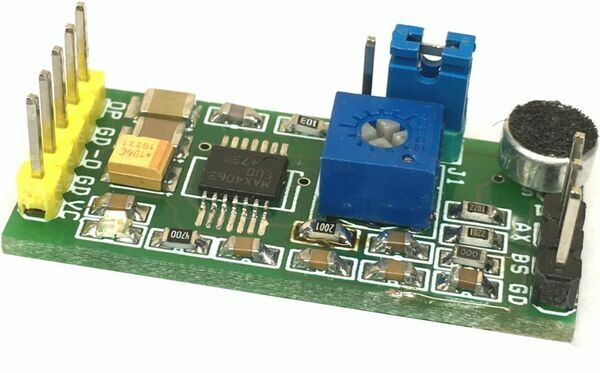
Differential Microphone Pre-Amplifier
"The project shown here is a microphone preamplifier that provides high quality amplification, optimized for use in computers, media and mobile applications. The pre-amplifier provides a differential input stage, making the device particularly effective when layout constraints force the microphone amplifier to be physically remote from the ECM microphone. This project features adjustable gain using PR1 trimmer potentiometer, very high power-supply rejection (95dB), and common-mode rejection (79dB), making it ideal for low-noise applications. Board is provided with condenser microphone as well as connector to connect external microphone, selection of external or internal microphone is possible with the help of on board Jumper. Circuit requires 5V DC input. The circuit provides differential output, use +OP/GND for single ended output." [...]
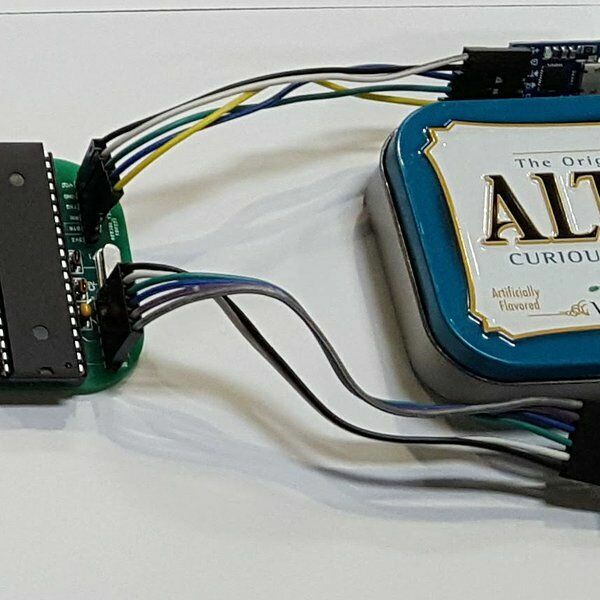
Minty Z80
"Minty Z80 is a system with virtualized I/O and minimum component count in an Altoids Tin. Retro Computing is one of my interests. Back in the day, I had a Z80 system running CP/M 80. The Z80 has enough resources (registers, instructions, etc) to make programming easy. CP/M 80 is a small, simple and easy to understand O/S. Drivers are simple BIOS routines." [...]
That's all Folks!



